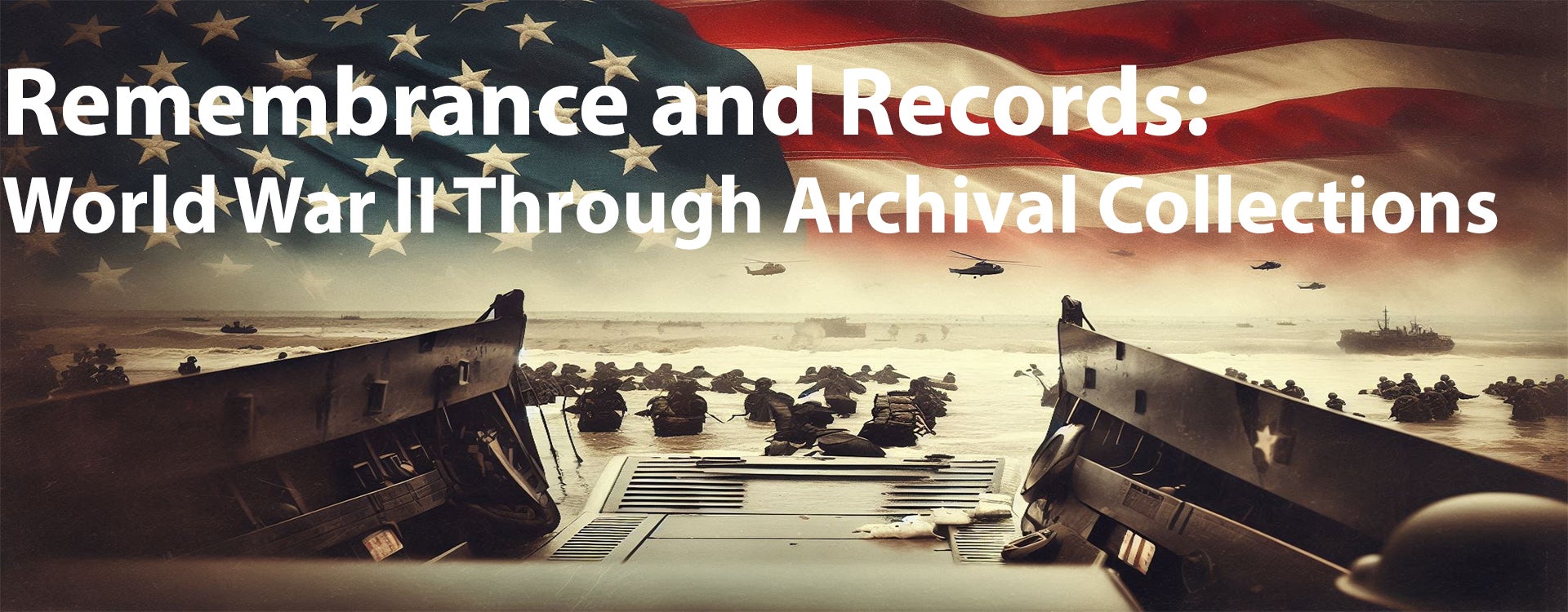“We must have ships and more ships:” United States Secretary of the Navy Frank Knox Responds to Attack on Pearl Harbor
Remembrance and Records: World War II Through Archival Collections
Over the next year, in commemoration of the 80th anniversary of the end of World War II, Joyner Library Special Collections will be highlighting items from the East Carolina Manuscripts Collection that relate to the conflict and the individuals who served.

This bulletin, sent by the Commander in Chief of the Pacific Fleet, announced the Japanese’s surprise attack on Pearl Harbor on December 7, 1941. Image from, Jules James Papers (#223), East Carolina Manuscript Collection, J. Y. Joyner Library, East Carolina University, Greenville, North Carolina, USA.
The attack on Pearl Harbor on December 7, 1941, stands as one of the most defining moments in American history, marking the United States’ entry into World War II. The surprise assault by the Imperial Japanese Navy on the U.S. Pacific Fleet stationed in Hawaii killed over 2,400 Americans, destroyed numerous ships and aircraft, and shattered the nation’s sense of security. Following this catastrophic event, the U.S. mobilized unprecedentedly, driven by urgency and a profound sense of duty to retaliate and defend the nation. A critical component of this mobilization is captured in a bulletin issued on December 9, 1941, by U.S. Navy Secretary Frank Knox, emphasizing the urgency and determination needed to overcome the enemy.
The bulletin, intended for naval personnel, provides a snapshot of the sentiments and immediate actions taken by the U.S. Navy following the attack. Dated just two days after Pearl Harbor, it conveys the gravity of the situation and the Navy’s resolute response. Secretary Knox’s language is notably intense and devoid of diplomatic nuances, describing the attack as a “savage, treacherous blow.” His words echo the widespread shock and anger felt by Americans at the time and served to rally all those involved in defense production and naval operations.
Knox’s message demands swift, decisive action: “We must have ships and more ships, guns and more guns, men and more men—faster and faster.” This call for immediate expansion of resources and personnel highlights the massive scale of the war effort required. The phrase “There is no time now for disputes or delay of any kind” underscores the urgency to prioritize national security over any bureaucratic or logistical obstacles. It reflects a shift in national focus, where every individual and resource was directed toward the war effort.
A notable aspect of Knox’s directive is the repetition of “comma” and “exclamation point,” indicating a telegram format in which punctuation was spelled out to ensure clarity and gravity. Such language, devoid of nuanced prose, amplifies the seriousness of the message, aiming to leave no room for ambiguity among the recipients. His phrase, “This is your Navy and your Nation,” directly appeals to personal responsibility, encouraging every person involved to understand their critical role in this collective fight.

Bulletin from United States Secretary of the Navy, Frank Knox, dated December 9, 1941. In this bulletin sent to all Naval Stations (ALNAVSTAS), Knox responds to the Japanese attack on Pearl Harbor. Image from, Jules James Papers (#223), East Carolina Manuscript Collection, J. Y. Joyner Library, East Carolina University, Greenville, North Carolina, USA.
Additionally, the bulletin stresses the importance of efficiency and removing restrictions that might delay production. By instructing naval activities to “post on all bulletin boards,” Knox clarifies that this message is not just for high-ranking officers but is meant to be seen and felt at every level of the Navy’s operations. He also authorizes inspectors to expedite procedures and invites “suggestions for removing restrictions,” signaling a shift toward a more flexible, purposeful approach in military operations and production.
The rallying message issued by Knox set the tone for a national mobilization effort that transformed American industry. Factories across the country rapidly converted to produce war materials, and citizens joined the armed forces or took on roles in defense plants, contributing to an unprecedented level of unity and sacrifice. The “speed up” command reflects how every minute was precious in the fight to recover from the Pearl Harbor losses and prepare for the global conflict that lay ahead.
This bulletin from Knox remains a poignant reminder of the intense determination that characterized America’s entry into World War II. It illustrates the nation’s transformation in the wake of Pearl Harbor—from a country still emerging from the Great Depression to a formidable military power, driven by a fierce resolve to protect its people and its values.
Visit the Ship’s Log, as well as Joyner Library’s social media channels, to learn more about materials related to World War II that are a part of the East Carolina Manuscripts Collection’s holdings. Joyner Library Special Collections will be displaying an exhibit of items and individual stories related to World War II during the summer and fall of 2025.
Sources:
- Jules James Papers (#223), East Carolina Manuscript Collection, J. Y. Joyner Library, East Carolina University, Greenville, North Carolina, USA.
